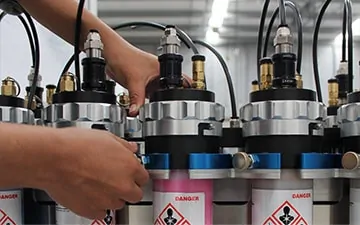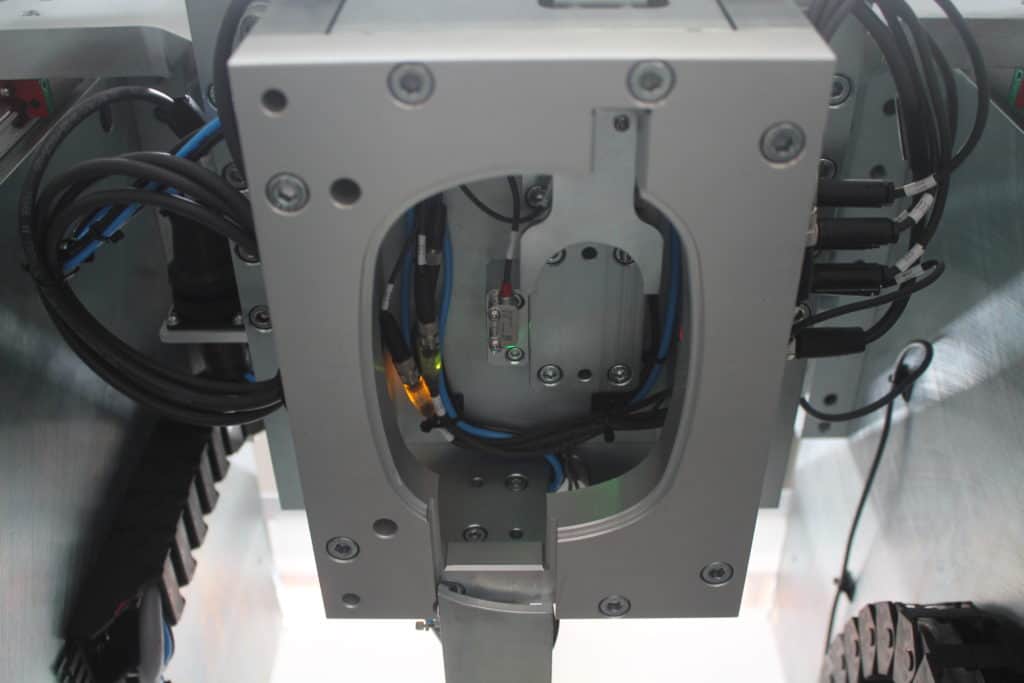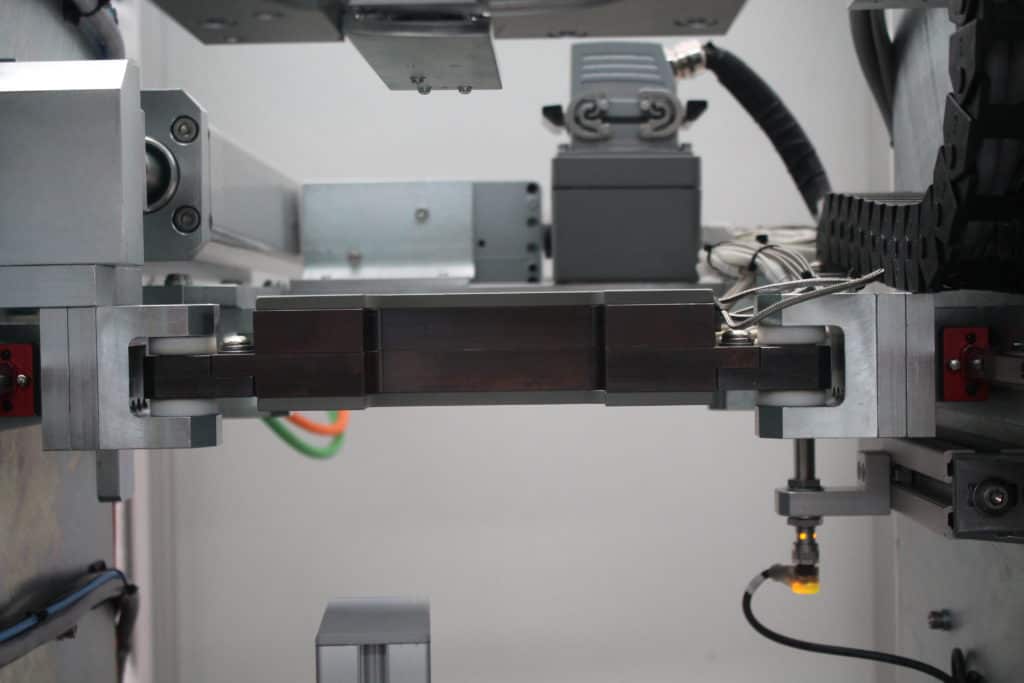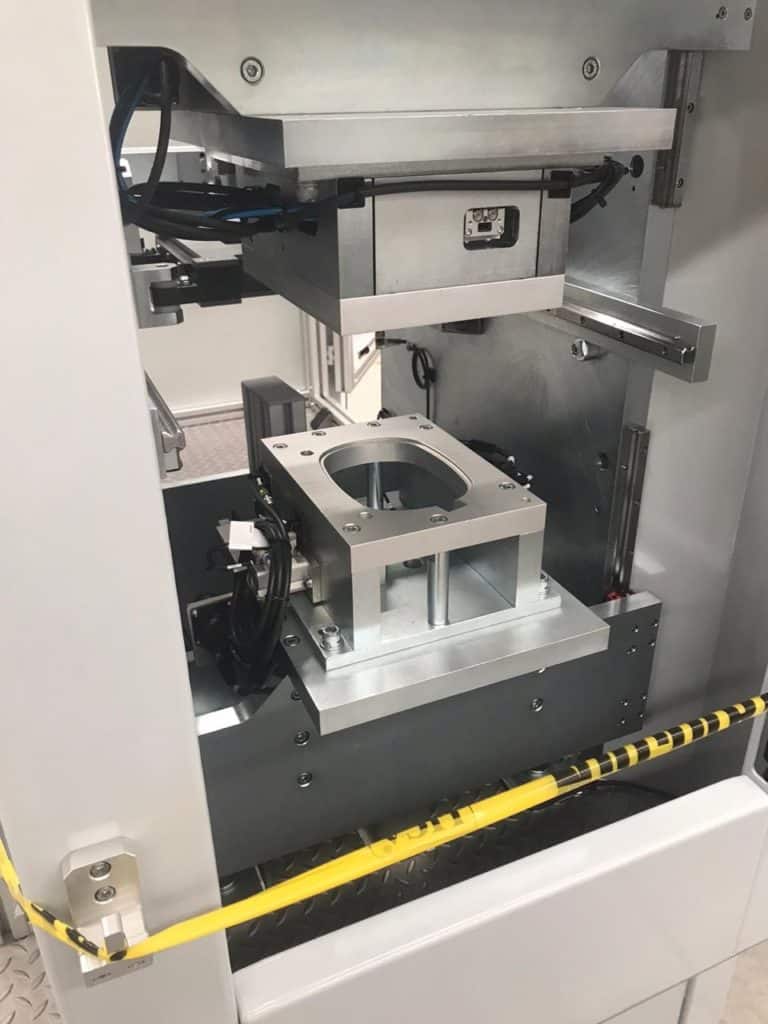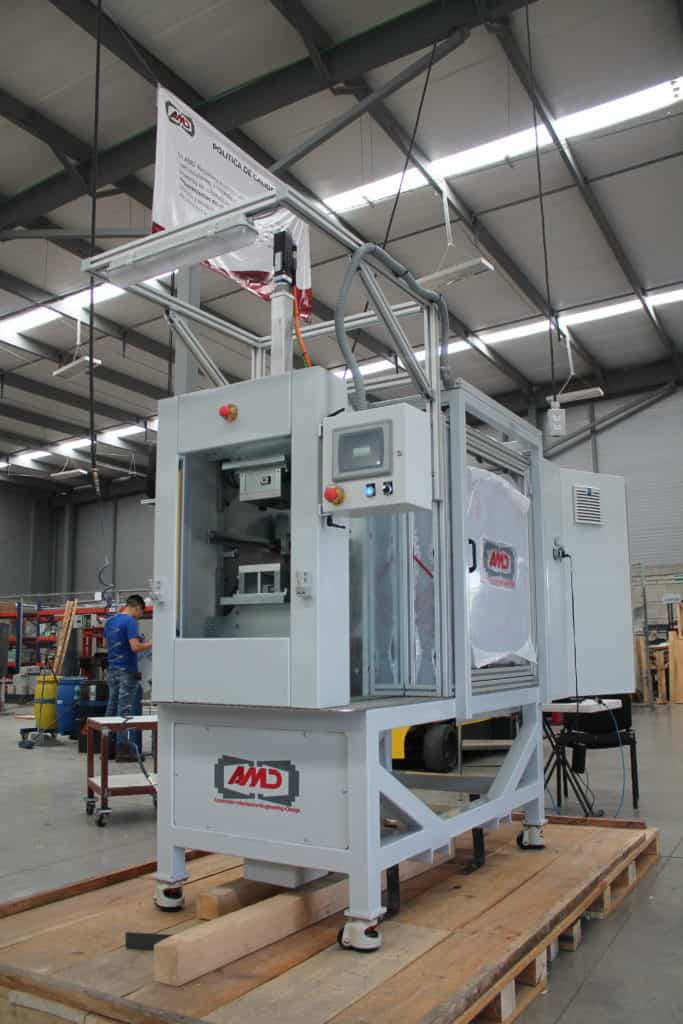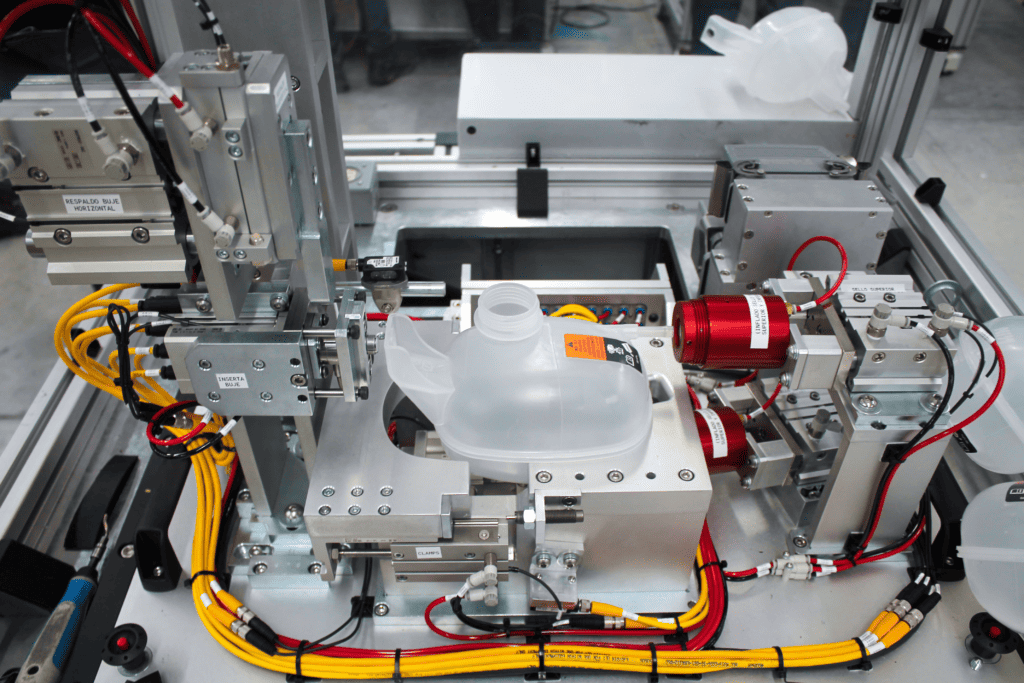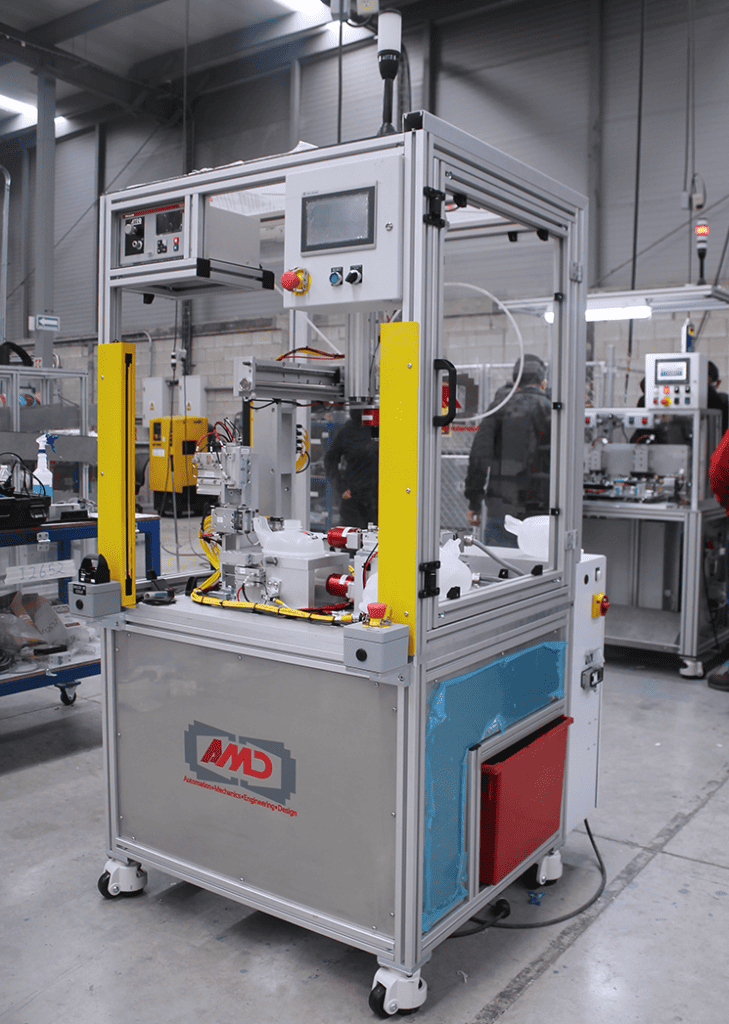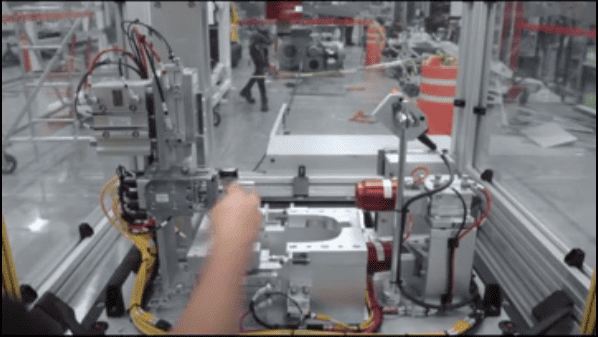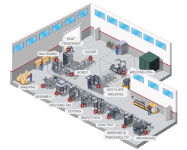At AMD, our specialty leak detection process is a valuable addition to the assembly line for many sectors, including the automotive industry. We have developed a breadth of experience with a variety of leak test stations from relatively simple solutions like automated bubble optical tests to more complex solutions like pressure decay, flow measurement, and sniffer detection. Leak detection equipment can test products after they come off the line or be integrated into the production line to test products during manufacturing. We work with our customers to determine the best testing method based on their needs.
What Is Leak Detection and How Is It Used?
Leak testing is part of the quality process in manufacturing. It is a critical step when a component or hermetic product is designed to hold liquids or gases up to a specified limit without leakage. Defects like holes, cracks, inadequate seals, or permeable areas in the material can result in leaks.
Gas and fluid leaks can not only cause product or system failures, but they can also be dangerous if they contain toxic, flammable, or combustible substances. Leak testing not only helps to meet quality standards, but it also prevents injuries, damage, and malfunction.
What Are the Different Types of Leak Detection?
Many industries make regular use of leak testing services in their manufacturing processes, including industrial, automotive, appliance, power and energy, and many more. AMD is an industry leader in leak detection, and we provide several tools and machines that offer different benefits and levels of sensitivity. Our most popular leak detection requests include pressure decay, flow tests, helium tests, and water tank tests, but we offer many others.
Bubble Testing
Bubble testing involves submerging a pressurized part into water. It can also be conducted by spraying soapy water across the surface to watch for bubbles which indicate the presence of a leak. Bubble testing is the preferred method for locating a suspected leak.
In addition, bubble testing the only method to execute when a part is still hot coming out of a welding process. The big change in the temperature does not allow the use of other test methods.
Flow Tests
In a flow test, air inside the tested volume is brought to constant pressure. A leak is detected if additional air flow must be added to maintain the pressure. When a product must be leak-proof, flow tests are a popular choice for leak detection. A flow test is recommended for parts with large volume and small leaks. Due to the large volume, it takes too much time to notice a change in pressure as the leak is happening.
Helium Accumulation Leak Detecting
Helium accumulation leak detection is a highly sensitive leak test method where the component is attached to a helium detector and placed in an airtight chamber. A vacuum is created in the chamber to determine if there are pressure variations. If there are, a leak is present.
Helium Sniffer Leak Detection
For applications requiring small leaks, a detector probe can be used to “sniff” for leaks. In this method, the item being tested is evacuated with a pumping group and then filled and pressurized with a tracer gas, like helium. In the inside out method, the probe is run all over the outside of the component to sniff out the presence of the helium. If the gas is detected, there is a leak.
The tracer gas chosen depends on the application and is a gas with a molecule size smaller than the ambient air molecule, so it’s able to escape through much smaller leaks than normal air.
Pressure Decay Leak Detection
In pressure decay testing, this is something carried out in the open air. The openings of the part are sealed, and the inside is pressurized, then stabilized. From there, we monitor the inside pressure for decay.
Tracer Gas Leak Detection
This type of test is similar to the Helium Sniffer leak detection, however here are gases other than helium that can be used for leak detection, such as hydrogen and nitrogen. While helium is the most common, it has some limitations.
Vacuum Decay Leak Detection
This test works the opposite way of a pressure decay test. This test measures the increase in pressure caused by introducing the test media after reducing the pressure to lower levels than the atmosphere. Only parts that can withstand external force can be tested in this way.
Comprehensive Leak Detection from AMD
At AMD, we are committed to finding the best leak detection test equipment and method for your application. We do not advocate any one brand or methodology but instead strive to give our customers an unbiased recommendation based on their specifications. We can develop your application tailor made for your particular needs. For help with your leak detection needs, contact us today.

